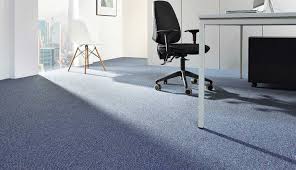Carpets have been an integral part of human civilization for centuries, serving not only as functional items for comfort and insulation but also as symbols of art and culture. The evolution of خرید موکت اداری is a fascinating journey that spans continents, cultures, and epochs, reflecting the creativity and ingenuity of the people who crafted them.
Origins and Early History
The history of carpets dates back to ancient times, with some of the earliest known examples originating from the Middle East and Central Asia. The Pazyryk carpet, discovered in a Scythian burial mound in Siberia and dating back to the 5th century BCE, is the oldest known surviving carpet. This remarkable artifact, preserved in ice, showcases the advanced weaving techniques and intricate designs that were already in existence thousands of years ago.
Carpets in Ancient Civilizations
Carpets played a significant role in ancient civilizations such as Persia (modern-day Iran), Egypt, and China. Persian carpets, in particular, gained widespread acclaim for their exceptional quality and intricate patterns. The art of carpet weaving was so revered in Persia that it became a major industry, with master weavers producing exquisite pieces for royalty and the elite. These carpets often featured elaborate designs inspired by nature, mythology, and religion, incorporating rich colors and complex motifs.
The Spread of Carpet Weaving
The art of carpet weaving spread across the Silk Road, reaching Europe, India, and other parts of Asia. Each region developed its unique style, influenced by local traditions and available materials. In Europe, carpets were initially imported as luxury items for the wealthy, but over time, local production began to flourish, particularly in countries like Spain and France.
In India, carpet weaving was introduced by the Mughal emperors in the 16th century. The Mughal carpets blended Persian influences with Indian artistry, resulting in stunning creations that featured intricate floral patterns and vibrant colors. These carpets became highly sought after, both locally and internationally.
The Industrial Revolution and Modern Carpets
The advent of the Industrial Revolution in the 18th and 19th centuries brought significant changes to the carpet industry. Mechanized looms and mass production techniques made carpets more accessible to a broader audience. While this led to a decline in handcrafted carpets, it also democratized carpet ownership, allowing people from various economic backgrounds to enjoy the comfort and beauty of carpets in their homes.
In the modern era, carpets come in a wide range of materials, styles, and price points. Synthetic fibers such as nylon, polyester, and polypropylene have become popular due to their durability and affordability. However, traditional wool and silk carpets continue to be highly prized for their natural beauty and luxurious feel.
Cultural Significance and Contemporary Trends
Carpets have always been more than just floor coverings; they hold cultural and symbolic significance in many societies. In Middle Eastern and Central Asian cultures, carpets are often used in religious and ceremonial contexts. For instance, prayer rugs are essential in Islamic traditions, providing a clean and sacred space for worship.
In contemporary interior design, carpets play a crucial role in enhancing the aesthetics and comfort of living spaces. Designers experiment with textures, patterns, and colors to create unique and inviting atmospheres. Sustainable and eco-friendly carpets are also gaining popularity as consumers become more environmentally conscious.
Conclusion
The journey of carpets from ancient times to the present day is a testament to their enduring appeal and versatility. Whether handcrafted by skilled artisans or produced using modern technology, carpets continue to be cherished for their ability to transform spaces and reflect the cultural heritage of their creators. As we move forward, the fusion of tradition and innovation will undoubtedly shape the future of carpets, ensuring their place in our homes and hearts for generations to come.



